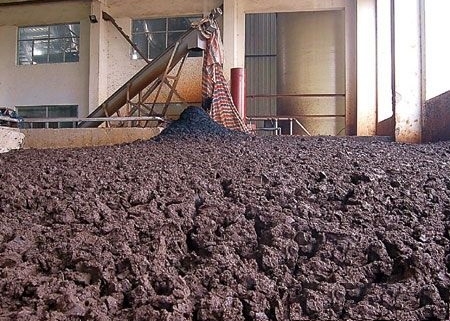1. Electroplating wastewater and electroplating sludge with excessive heavy metals:
Electroplating sludge is a hazardous waste, and the waste category often belongs to HW17, HW21, HW22, and HW23. Electroplating wastewater with excessive heavy metals belongs to the scope of prevention and control of wastewater pollution and is included in wastewater management. It is not applicable to the scope of the Law of the People’s Republic of China on the Prevention and Control of Environmental Pollution by Solid Wastes and is not classified as hazardous waste. Although excessive wastewater is not included in hazardous waste management, according to the “Two High Judicial Interpretation” (2016 edition), if a type of heavy metal (such as lead, mercury, chromium, cadmium, or arsenic) in wastewater exceeds the standard by 3 times, or two types of heavy metals (such as If nickel, copper, zinc, manganese or vanadium exceeds the standard by more than 10 times, in addition to administrative punishment, it will be investigated for criminal responsibility.
2. Sludge produced by domestic sewage treatment plant:
It is a solid waste and is not classified as hazardous waste. According to the document [2005] No. 157 of the Central Office [2010], in the process of transfer management, this type of waste “refers to the management of hazardous wastes and establishes a system for sludge transfer and joint order.” According to the definition of hazardous waste management, this type of sludge does not belong to Hazardous waste, but to improve the management level, especially to strengthen the management of the account, to prevent leakage and illegal dumping during transportation. However, the sludge produced in the sewage treatment process of industrial enterprises is often classified as hazardous waste due to its leaching toxicity, or other toxic and hazardous substances and other dangerous characteristics. The judgment method is mainly based on enterprise environmental assessment, industry rules and materials. Source, expert identification, attribute identification, etc.).
3. Fly ash from domestic waste incineration:
Belongs to hazardous waste (HW18). However, after meeting the requirements of Section 6.3 of the Domestic Waste Landfill Pollution Control Standard (GB16889-2008), the landfill into the domestic waste landfill is not included in the management of hazardous waste; in another case, after pretreatment, To meet the relevant requirements of the “Cement Kiln Cooperative Disposal Solid Waste Pollution Control Standards” (GB30485-2013), the collaborative disposal process is also included in the scope of exemption management.
4. Sludge generated during the sewage treatment process of medical institutions:
Most are hazardous waste. The Medical Waste Management Regulations (Order No. 380 of the State Council) stipulates that “medical waste refers to direct or indirect infection, toxicity and other hazards arising from medical, preventive, health care and other related activities of medical and health institutions. Waste.” The National List of Hazardous Wastes stipulates that “medical waste is classified as hazardous waste. The classification of medical waste is carried out in accordance with the Catalogue of Medical Wastes.” “Catalogue of Medical Wastes” (Wu Wei Fa [2003] No. 287) “Infectious waste” includes “other items contaminated by blood, body fluids and excretions of patients”, and grid slag, sediment sludge and septic tank sludge generated in the sewage treatment process of medical institutions shall be included in this category.
If a medical institution is specially designed for the wastewater treatment process and has made a property determination for the sludge, if the management considers that the sludge should be included in the hazardous waste management, the final determination should be made through the hazardous waste identification procedure. .



